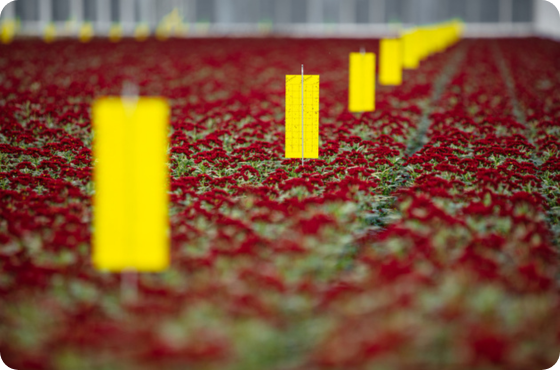Quality Products
Fast Delivery
Premium Service
Detecting Insects and Monitoring Pest Control in Greenhouse Settings
Written by Jan-Paul de Wit. Last update: 10. August 2023
Insect detection in a crop is important, because the quicker a pest is identified, the sooner pest control measures can be initiated. By closely monitoring pest development, through the use of sticky traps, you can determine the effectiveness of a chosen pest control strategy. And then also decide whether adjustments are needed.


3. Usage timing: In ornamental plants, signal rollers can be used year-round. For vegetable crops, we suggest placing signal rollers right after planting in a new crop during crop rotation or shortly thereafter. In either situation, hang one signal roller per every 2 or 3 canopy caps. For tomato cultivation, consider placing one ribbon per trellis and one per row in the event of increased hotspots.